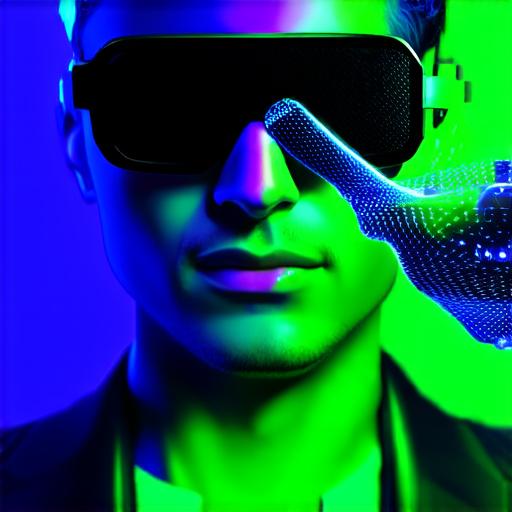Understanding the Basics of Augmented Reality
Before diving into more advanced topics, it’s essential to have a solid understanding of the fundamentals of AR. This includes comprehending the different types of AR (e.g., marker-based, image-based, and depth-based), as well as the crucial components of an AR system (e.g., camera, sensors, and display).
One exceptional resource for learning about the basics of AR is the “Introduction to Augmented Reality” tutorial on the Unity website. This tutorial provides a comprehensive overview of AR, including its history, applications, and key concepts. It also includes interactive examples that enable you to experiment with AR in real-time.
Exploring Case Studies in Augmented Reality
Case studies are an excellent way to learn about the practical applications of AR. By analyzing real-world examples, you can gain insights into how AR is being used in various industries and use cases.
One successful AR application is IKEA’s AR app, which allows users to visualize furniture in their homes before making a purchase. The app uses marker-based AR to overlay virtual furniture onto the real world, allowing users to see how the pieces would look in their space. This has resulted in increased sales and customer satisfaction for IKEA.
Another example is the use of AR in healthcare. For instance, the “Seeing with One’s Own Eyes” app developed by Google allows surgeons to visualize patient anatomy in 3D, which can improve the accuracy of surgical procedures.
Personal Experiences with Augmented Reality
Personal experiences can provide valuable insights into the capabilities and limitations of AR. As an AR developer, it’s crucial to try out different AR tools and platforms to gain a better understanding of what works well and what doesn’t.
One personal experience that comes to mind is my time spent working on a project using Unity’s AR tools. I was tasked with creating an interactive AR experience for a museum, which involved overlaying virtual information onto physical exhibits. This project required me to experiment with different AR techniques and approaches, as well as work closely with museum staff to ensure the final product met their needs.
Expert Opinions on Augmented Reality
Expert opinions can provide valuable insights into the future of AR and emerging trends in the field. It’s crucial to stay up-to-date on the latest research and developments in AR, as these can inform your own work and help you stay ahead of the curve.
One expert opinion that comes to mind is a quote from Dr. David Eagleman, a neuroscientist and author who specializes in the study of perception and cognition: “AR is not just a technology, it’s a way of thinking.” This quote highlights the transformative potential of AR and encourages AR developers to think creatively about how they can use this technology to enhance human experiences.

FAQs on Augmented Reality
To address some common questions about AR, here are some answers:
- What are the benefits of AR?
- How does AR work?
- What is the difference between AR and VR?
- How can I become an AR developer?
AR offers several benefits, including enhanced visualization, increased engagement, improved accuracy, and reduced costs. It can also provide a more immersive and interactive experience for users.
AR works by overlaying virtual objects onto the real world using a camera, sensors, and display. The system tracks the user’s position and orientation in real-time to ensure that the virtual objects are correctly positioned and aligned with the real-world environment.
AR and VR are both immersive technologies, but they differ in how they interact with the real world. AR overlays virtual objects onto the real world, while VR creates a completely artificial environment for the user to interact with.
To become an AR developer, you will need skills in programming, 3D modeling, and design, as well as experience with AR tools and platforms like Unity or ARKit. You should also have a strong understanding of user experience (UX) design and be able to think creatively about how to use AR to enhance real-world experiences.
Conclusion
AR is a rapidly evolving technology that has the potential to change the way we interact with digital information. As an AR developer, it’s crucial to stay informed about the latest trends and techniques in this exciting field. By exploring case studies, personal experiences, expert opinions, and FAQs, you can gain a better understanding of AR and its capabilities. With this knowledge, you can then begin experimenting with AR tools and platforms to create innovative and engaging experiences for users.
